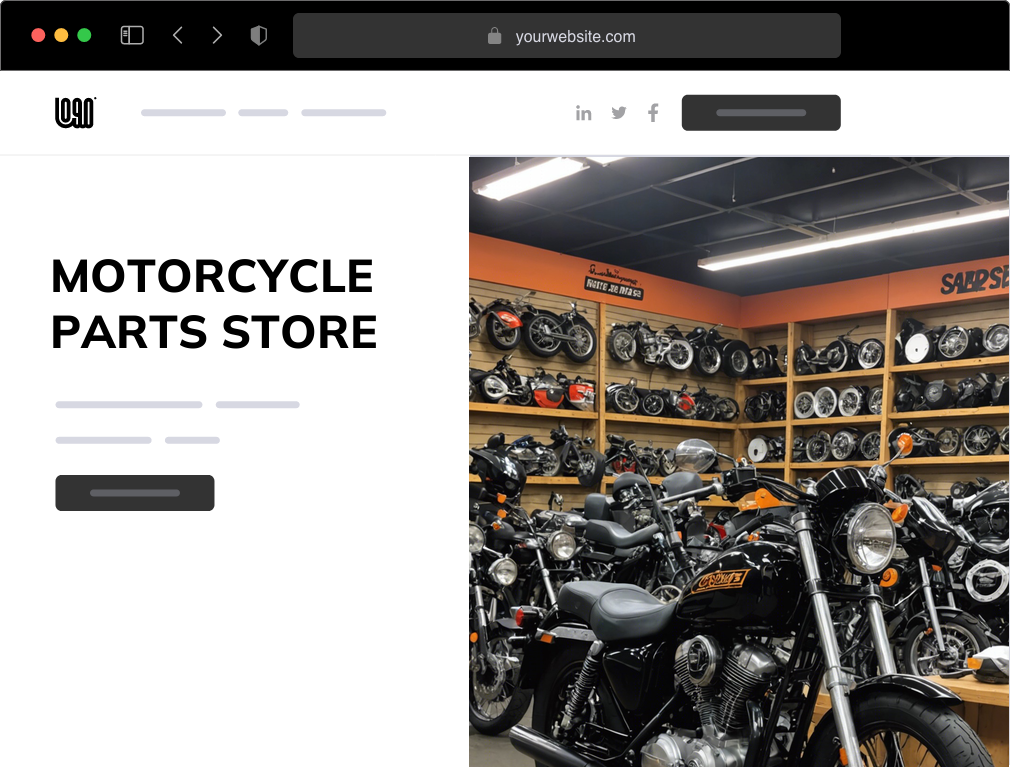Grasping Motorbike Gears: Exactly How to Enhance Your Riding Experience
In the realm of motorcycling, understanding the art of gear control is important for improving your riding efficiency. Correctly making use of and comprehending bike equipments can significantly affect control, acceleration, and fuel efficiency, transforming an ordinary ride right into a smooth, exhilarating trip.
Recognizing Gear Mechanics
At the core of motorcycle characteristics, equipment auto mechanics play a crucial duty in transforming engine power into motion, ultimately determining rate and control. The gear ratios, meticulously developed, identify the relationship in between engine changes and wheel turns, affecting acceleration and gas performance.
Recognizing gear technicians begins with identifying the importance of the gearbox, which houses multiple equipments of varying dimensions. These equipments communicate via a process recognized as meshing, where teeth of different equipments engage to send power.
Moreover, the idea of equipment shifting is important to making the most of efficiency. Smooth and timely changes guarantee that the engine operates within its optimum power band, avoiding unnecessary pressure and enhancing durability (motorbike shop). By understanding these mechanical details, riders can attain an unified blend of control, performance, and power, boosting their riding experience
Timing Your Changes
Change timing proficiency is important for enhancing motorcycle performance and improving the riding experience. Effectively timed shifts guarantee that the engine runs within its optimal power band, which is essential for preserving control, accomplishing smooth velocity, and making certain the long life of the bike. Cyclists must develop an intuitive sense of when to move equipments, which includes recognizing the partnership in between engine changes per min (RPM) and rate.
To grasp shift timing, pay close interest to the engine's noise and feel, as these offer important clues about when to change gears. When the engine comes close to the top variety of its power band without reaching the redline, the optimal shift factor commonly takes place - motocross gear. Moving prematurely can lead to a lack of power, while shifting also late might trigger unnecessary engine strain
In addition, roadway conditions and riding style influence shift timing. As an example, in city setups, smoother and much more frequent shifts might be necessary to browse traffic successfully. On the other hand, throughout highway riding, fewer changes at higher rates can be better. Exercising in diverse settings will certainly improve your capacity to time shifts specifically, ultimately boosting your riding experience to a professional degree.
Enhancing Gas Performance
While grasping bike equipments is vital for performance, improving gas performance is equally crucial for both ecological and financial reasons. Ideal gas intake not only decreases functional prices but also lessens the eco-friendly footprint of riding. To achieve this, one need to recognize the intricate relationship between gear choice and engine efficiency.
Riding in a greater equipment at reduced rates can lead to engine view it hauling, which is detrimental to both gas economic situation and engine health. Alternatively, riding in reduced equipments at high speeds results in unnecessary fuel consumption.
In addition, normal upkeep plays an essential function in fuel efficiency. why not try these out Ensuring that the bike is well-tuned, with tidy air filters and appropriately pumped up tires, can improve aerodynamics and reduce fuel wastage. In addition, taking on a riding style that embraces steady velocity and smooth deceleration can add to far better gas economy.

Strategies for Smooth Transitions
Accomplishing smooth gear changes is fundamental to boosting the riding experience and making sure the durability of a motorcycle's transmission system. Correct gear changing not only adds to a seamless adventure however additionally lessens wear and tear on the mechanical elements. To understand the art of smooth shifts, cyclists should concentrate on a few vital techniques.

Secondly, clutch control plays a crucial function. Engaging and disengaging the clutch efficiently requires method. The clutch bar need to be released slowly, enabling a smooth transfer of power from the engine to the wheels without causing a jolt or sudden movement.
Adapting to Road Conditions
Navigating diverse roadway problems is a critical ability for any kind of motorcyclist intending to maintain control and safety and security. Whether you're riding on damp surfaces, gravel roadways, or browsing doglegs, your capability to adapt your gear use and riding strategy is vital. Comprehending how to change your equipments appropriately can significantly influence grip and stability, guaranteeing a safer trip.
In comparison, when riding on gravel or unequal terrain, reduced gears are better. Lower equipments offer far better control and enable you to react more quickly to unforeseen modifications in the road surface area.
Sharp curves require precise equipment administration to balance rate and control. Downshifting before going into a contour can aid preserve energy while guaranteeing the bike stays secure throughout the turn. Consistent method in diverse conditions boosts your ability to respond and anticipate to adjustments in road structure and slope.
Conclusion
Mastering motorcycle gears significantly enhances the riding experience by improving velocity, control, and gas effectiveness. Adapting gear selection to various road conditions, such as using greater equipments on damp surfaces and lower gears on crushed rock, more boosts handling and safety and security.
Recognizing equipment mechanics begins with acknowledging the relevance of the gearbox, which houses several gears of varying dimensions. These equipments engage with a Full Article procedure recognized as meshing, where teeth of various gears engage to transfer power (motorcycle parts nz). Gentle adjustments to the throttle throughout equipment shifts can prevent jerky activities and keep a constant riding pace
Whether you're riding on damp surface areas, crushed rock roads, or browsing sharp turns, your capability to adapt your equipment usage and riding technique is paramount. Adapting gear choice to different roadway problems, such as making use of greater equipments on damp surface areas and reduced equipments on gravel, further boosts handling and security.